The New Motorola Moto X (2nd Gen) Review
by Joshua Ho on September 17, 2014 9:00 AM EST- Posted in
- Smartphones
- Motorola
- Android
- Mobile
GPU Performance
As said in the previous section, we'll look at game-based benchmarks to get a better idea of how the Snapdragon 801's Adreno 330 GPU performs.
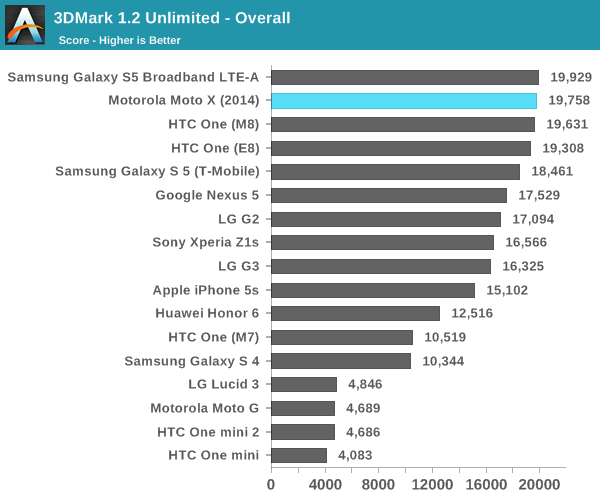
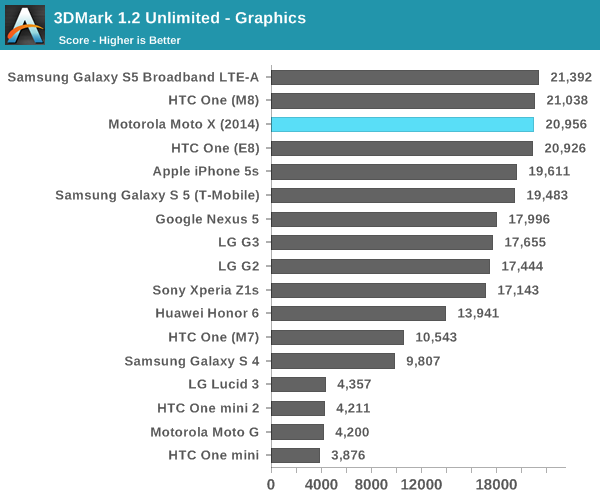
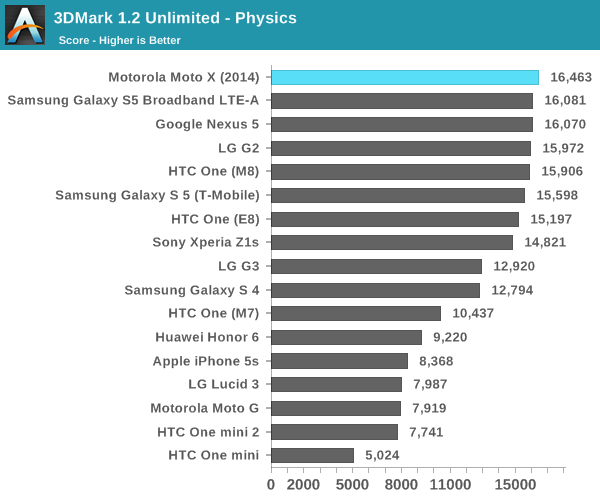
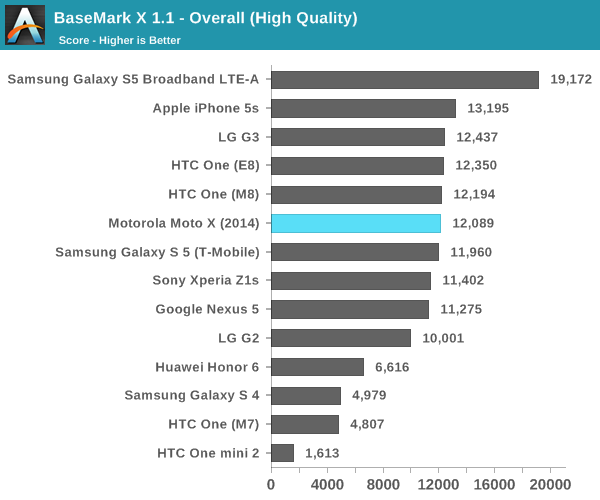
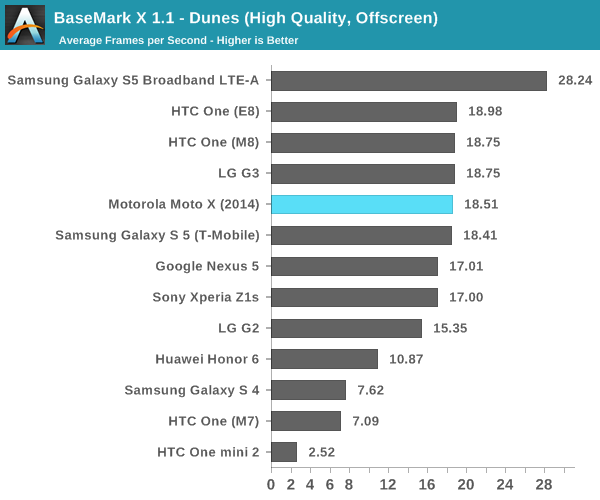
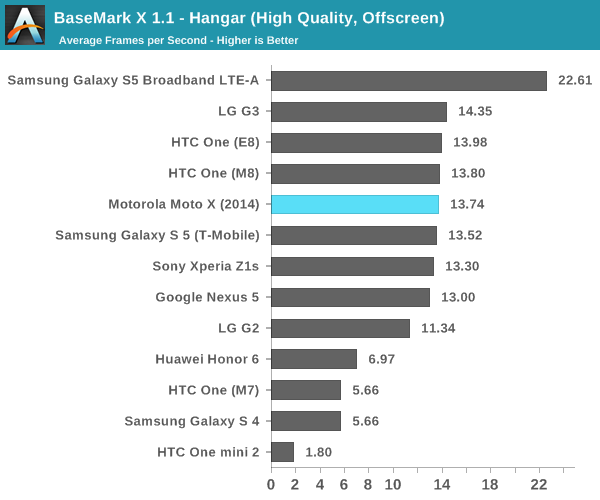
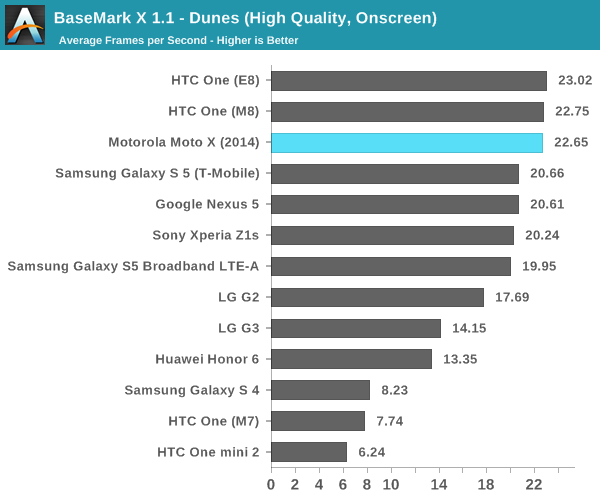
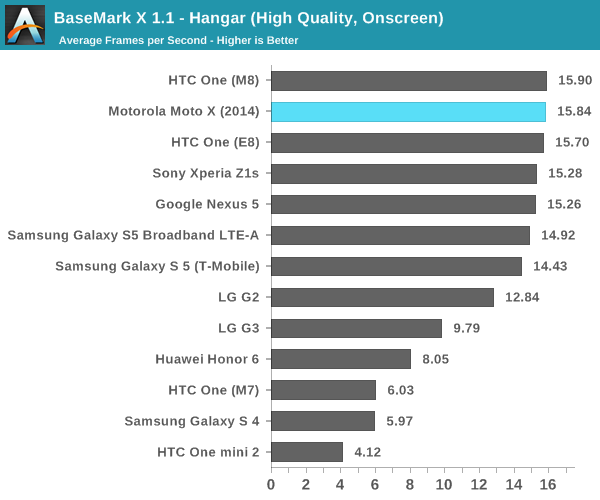
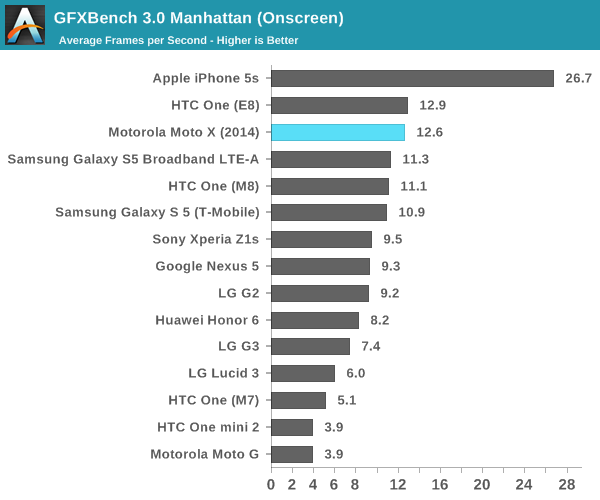
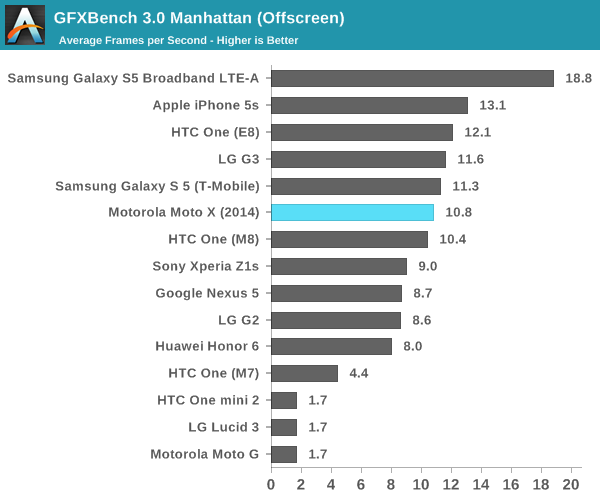
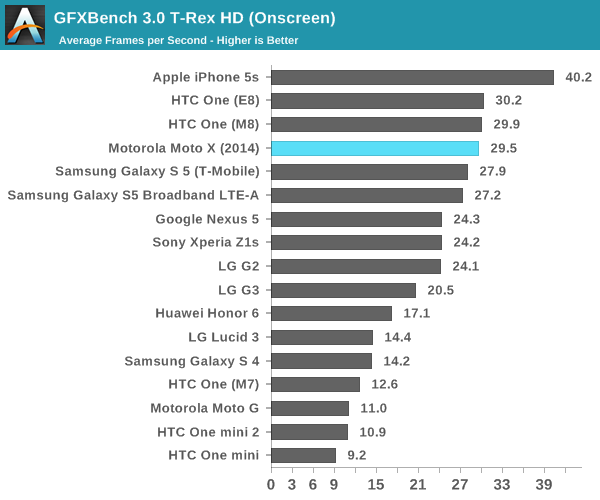

Once again, there are really no results that stand out. I suspect that the metal frame helps to prevent thermal throttling in short benchmarks, but in most scenarios this doesn't really play out and there's no real way to establish long term performance as the GFXBench rundown test doesn't complete properly.
NAND Performance
NAND performance has been an ongoing issue since we first illustrated how poor NAND could easily become a massive detriment to user experience. While sequential reads and writes are generally at a good level these days, it’s the random read and write tests that can be incredibly poor, and these are often a good indicator of overall UI performance as something like installing applications can make a device unusable if storage performance isn’t good enough. In order to test this, we turn to Androbench with a few custom settings to best represent performance.
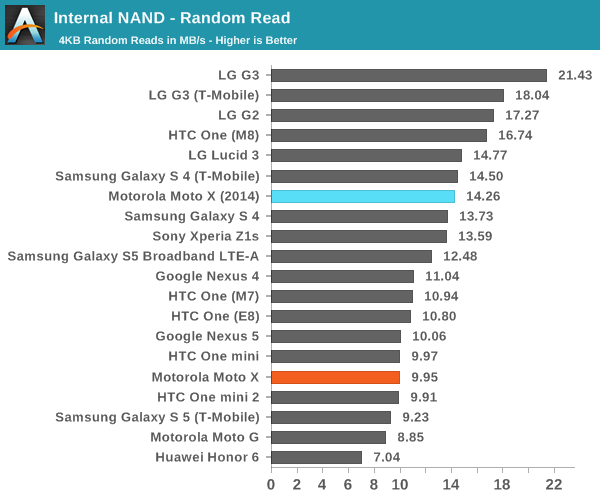
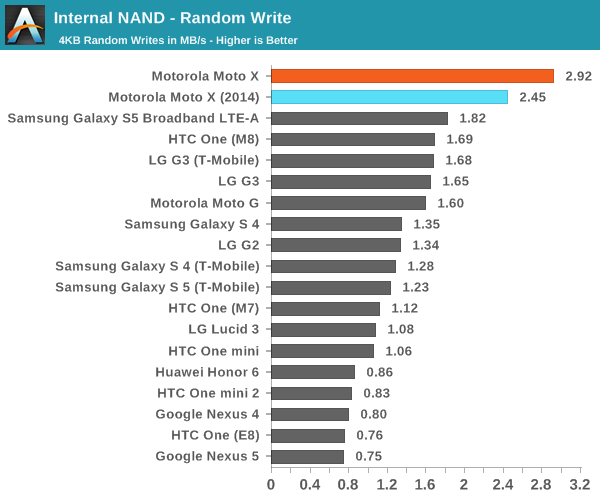
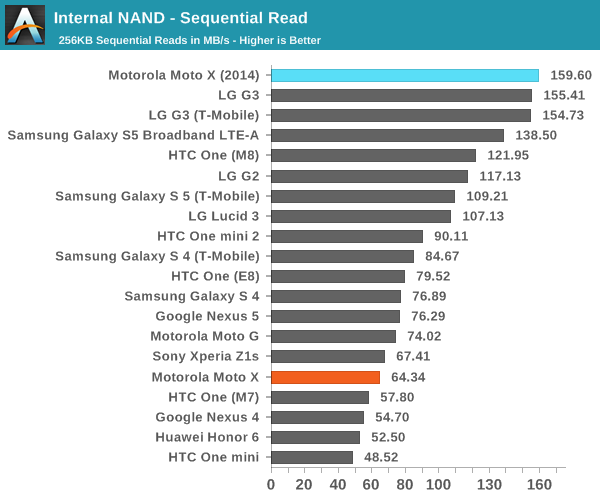

While the new Moto X doesn't quite top the previous Moto X in random write speeds, it's unlikely that the storage solution is worse. I found that the data and system partitions now use ext4, which means that the performance gains we saw with f2fs are gone. I'm not sure why Motorola decided to change back to ext4 given the performance gains that come with f2fs, but possible reasons include unforeseen conditions where f2fs could result in data loss compared to ext4 or difficulties in integrating f2fs support on Android. At any rate, the new Moto X is one of the best performers in this category, which should keep performance high after a year or two of use.










179 Comments
View All Comments
BGQ-qbf-tqf-n6n - Wednesday, September 17, 2014 - link
There have been multiple articles on the tech press regarding Brian Klug also being hired by Apple. Recent "wish I could comment" tweets post-iPhone release seem to support this.melgross - Thursday, September 18, 2014 - link
No, he went to apple about a year ago.Impulses - Wednesday, September 17, 2014 - link
I still his Twitter account is still active, his hobby site hasn't seen many updates but it never did. I miss his insights, always found it very on point, but Joshua is doing a good job...Tho I'm now wondering what his preferred Android UI is (Sense?), since he made a comment along the lines of "AOSP isn't my preferred Android UI" in this article.
soccerballtux - Thursday, September 18, 2014 - link
+1 he really left us hanging. what does he like? what should I?Impulses - Monday, September 22, 2014 - link
I actually meant I'm wondering what Joshua's logged l preferred UI is, since he made that comment I alluded to in this review. I think Brian had a preference for cleaner Nexus/Moto devices, tho Sense's value seems to ebb and flow in between Sense/AOSP releases.svan1971 - Wednesday, September 17, 2014 - link
"While the actual ROM itself seems to have some stability issues such as reboots, app crashes, and other oddness, the functionality is fantastic." its the need to make comments like this that caused me to switch to apple after 4 years of being apart of the droid collective...I will not be assimilated !fokka - Wednesday, September 17, 2014 - link
i'm actually surprised that this statement is not elaborated on some more. you should be able to expect a new flagship phone to work without random reboots and "other oddness" in 2014, even on android.hansmuff - Wednesday, September 17, 2014 - link
So I also wish there was more elaboration on this.Is it typical for the ROMs to get updated as they fix bugs? If so, that would mean older phone revisions would need patches to replace ROM code, taking up RAM.
How is this handled in the smartphone world?
Zoomer - Monday, September 22, 2014 - link
ROM is kind of a misnomer nowadays since it's actually stored in flash. Though one could argue that it's software enforced ROM since most phones with locked bootloaders / no root desn't allow writes to system.JoshHo - Wednesday, September 17, 2014 - link
I'm reluctant to make any final judgments on the stability of software as I was told to expect a launch day OTA.